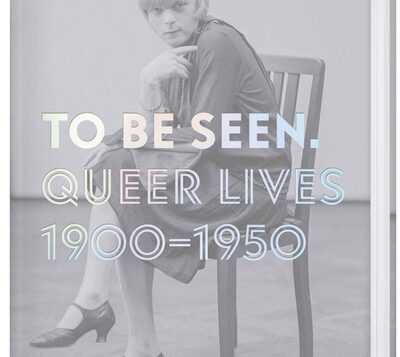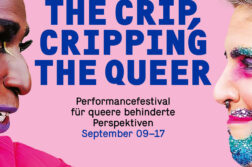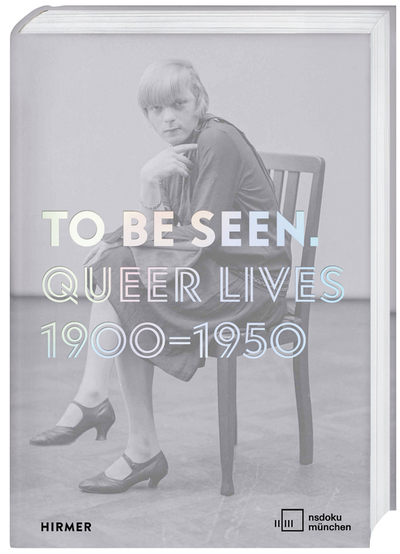 To Be Seen, Queer Lives: 1900-1950
To Be Seen, Queer Lives: 1900-1950
Munich Documentation Center for the History of National Socialism
Oct. 7, 2022 until May 21, 2023
When I was a kid, one of the places my grandfather liked to take me was theFort Worth Museum of Science and History. While not a scientist or historian, Grandpa was the grandson of a German immigrant and maintained a proud interest in Germany. At the museum, he pointed out the many scientific advances that originated in Germanic Europe. No wonder then, when I came out to Grandpa as a teen, I appealed to his interest in German culture. Did he know, I asked him, that the word “homosexual” was coined in a German-language letter, or that the first scientific study of gender expression took place in Berlin? Did he know that gay men in concentration camps were not generally freed when the camps were liberated? No, he said, he didn’t know that. A while later,he said to me: “I read every book I could get my hands on about German science and the world wars. How did I not know any of these things you’ve told me about your community in those times and places?”
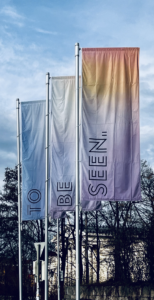
An exhibit in Munich provides insights into the question my grandfather asked years ago. To Be Seen, Queer Lives: 1900-1950, on display at the he Munich Documentation Center for the History of National Socialism (nsdoku) in Munich, reveals moments of queer life during the emerging explorations of identity after the turn of the century, including the vibrant years of the Weimar Republic, the years of Nazi persecution, and the early postwar years. For each era, the exhibits present moments of queer self-expression, creativity, and courage—always under the shadow of the threat of violence, exposure, incarceration, or even death.
Because of those threats, queer writings and art were often intentionally concealed, lest they be discovered and destroyed. But much queer history simply went unwritten and untold. However, not all was lost. To Be Seen allows its fragmentary artifacts to tell a story of queer survival and sometimes even celebration in those years.
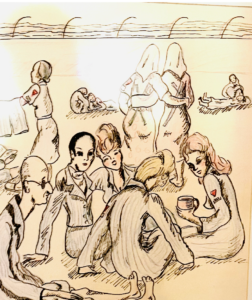
Documents and writings, wrenching enough on their own, are interspersed with photographs and other visual media, including paintings, film clips, and material objects. As I walked among these varied exhibits, they spoke vividly across space and time, with works by artists and authors previously unknown to me. Nina Jirsíková, for one, was a Czech dancer and choreographer who was sent to Ravensbrück concentration camp in Germany, the only camp that imprisoned exclusively women. She produced a number of paintings of life there—a remarkable and moving achievement. Her painting Lagrovka v. Nedeli (1944) shows inmates sitting in groups or walking about, several with coiffed hair, a few with a pink triangle on their sleeves.
The hidden history of trans life is prominently featured. (The term“trans”in the exhibit’s signage is always followed by an asterisk, to emphasize that current terminology did not apply at the time.) Among the monumental, and little known, artifacts of trans history on display is Karl M. Baer’s Aus eines Mannes Mädchenjahren (Memoirs of a Man’s Maiden Years), published in 1907 under the pseudonym N.O. Body. Baer was the first person known to have undergone sex transition therapy and surgery. Baer’s surgery took place in Berlin in 1906, and when he was discharged from the hospital, his new paperwork identified his sex as male. Baer participated in therapy with Magnus Hirschfeld and organized the therapy notes he wrote for Hirschfeld into the text forhis fictional memoir. A few years later, in 1919, a film based on the work was produced. Baer’s original notes for Hirschfeld, the records of his surgery, and all copies of the film were lost in Nazi purges of “degenerate art.”
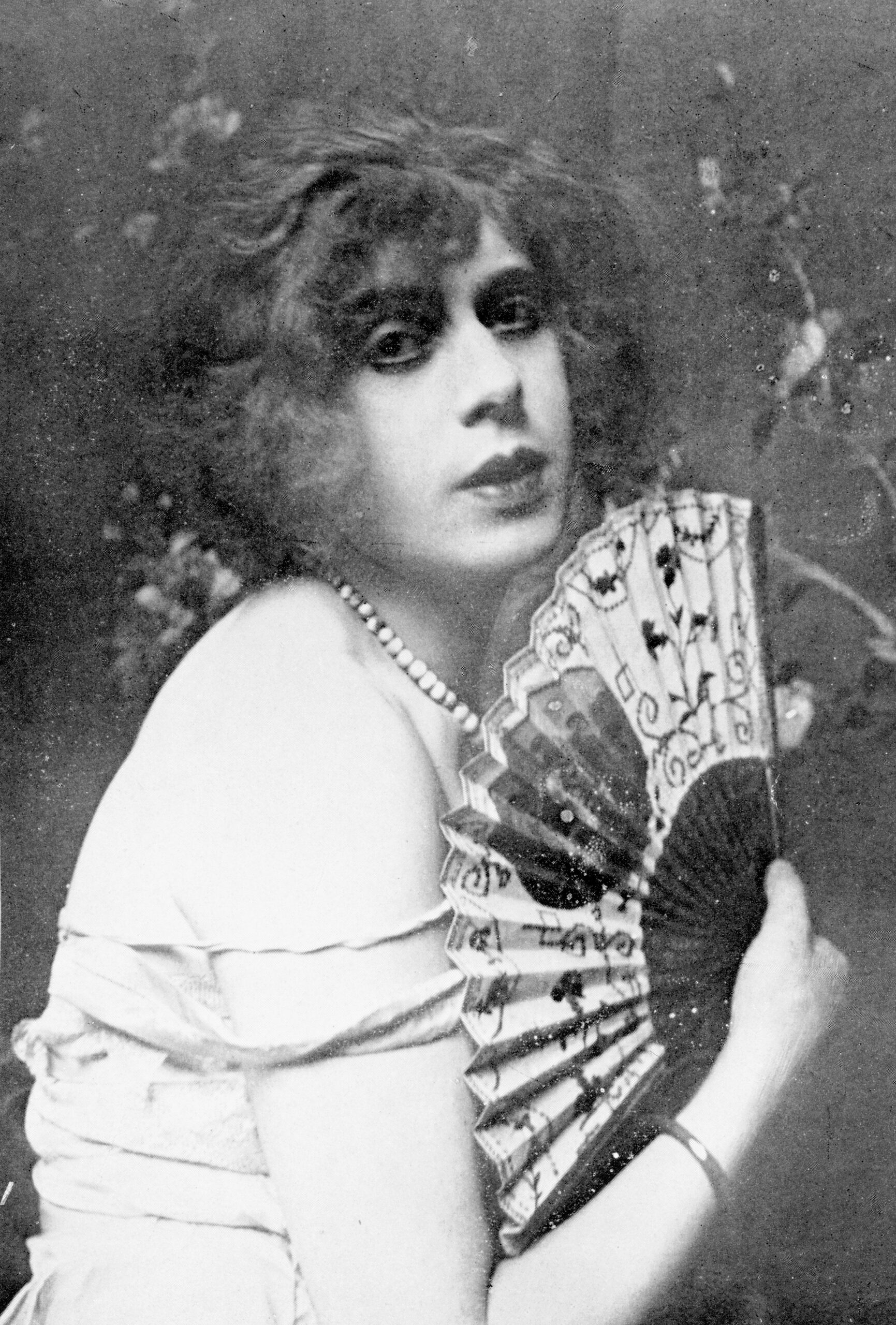
Hirschfeld and his Institute and a number of people like Claude Cahun and Lili Elbe, whose names have begun to be recovered, also figure in the exhibit. Despite the huge loss of materials, the surviving objects reveal much about those who lived, worked, and were treated there. We see a photograph, for example, of Hirschfeld and his young lover Li Shiu Tong, as well as a copy of Hirschfeld’s book Racism, and a letter from Hirschfeld to Gerd Katter, a trans man whom he treated. Another patient at the Institute receives considerable attention. Readers and viewers of the novel and film, The Danish Girl, based on Elbe’s life, will recall that Elbe’s wife, Gerda Wegener, was an artist; several of Wegener’s paintings portray a glamorous, feminine Elbe. Also on display is a letter in Elbe’s hand, documenting her final sex assignment surgery in 1931.
While Hirschfeld, colleagues, and patients at his Institute pioneered scientific study of sex and gender, others, like Cahun, pursued similar explorations in the visual arts. After years of neglect, Cahun’s long and genre-bending career is rightfully receiving critical attention, and a pamphlet on Cahun’s work is exhibited. Born Lucy Schwob, Cahun adopted the pseudonym Claude Cahun to emphasize her self-described (in her book Disavowals) neuter gender. Her photographs—surrealist, theatrical, camp, gender-exploring—stand as a stark contrast to firm gender norms in early and mid-twentieth century norms. An “Overlooked No More” obituary in the New York Times evaluated Cahun’s life and work, known to have influenced David Bowie, among others. Also knownfor transgressing gender normswas Marlene Dietrich, who’s dressed in traditionally masculine clothes. Dietrich fans will be delighted to see the cufflinks and cigar case fromMorocco, apre-code film in which she kissed a woman.
If the lives and work of Hirschfeld, Elbe, Cahun, and Dietrich are bursts of light at the exhibit, darkness nonetheless closes in on much of the experience. There are photos of Fritz Kitzing, a book dealer, arrested for wearing women’s clothes after the Nazis took power, and of Hans Scholl, wholed the White Rose student resistance movement in Munich before being captured and hanged (a storylater told in the film Sophie Scholl: The Final Days).
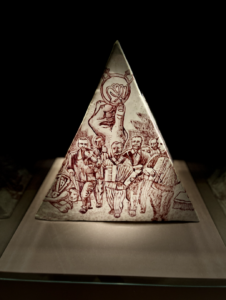
A section of the exhibit is devoted to Paragraph 175, the 19th-century anti-sodomy law that was revised over the years to target gay men, and which wasn’t repealed until twenty years after the war. Because Britain, France, and the U.S.also had their own anti-sodomy laws, men marked with a pink triangle were not freed by the Allies when the concentration camps were liberated. In many cases,those wearing the pink triangle were sent to German prisons to finish out their sentences.
Nevertheless, queer life began to flourish, albeit privately at first, in the postwar years. Magazines and flyers for gay bars and events are on display. There’s a photo of the famous El Dorado cabaret in Berlin and a copy of an LGBT travel magazine from 1920-21, among many objects from this era. A photo of Dora Richter shows her at Hirschfeld’s Institute in 1923, where she worked as a maid. She was the first person to undergo gender reassignment surgery, which had happeneda year earlier. Hauntingly, the caption tells us that after the Institute was sacked after the Nazis took power, Dora disappeared from the photographic and public record. Nothing is known of her after 1933. We know her story, like the stories ofcountless otherLGBTpeople, only fragmentarily. At least in a small way, the Munich exhibit gives Dora, and many others, a chance to be seen, remembered, and honored.
Brian Fehler is a writer and professor currently teaching at Texas Woman’s University. He is a member of the Human Rights Commission’s DFW Federal Club and a recent graduate of Equality Texas’s fellowship program.


